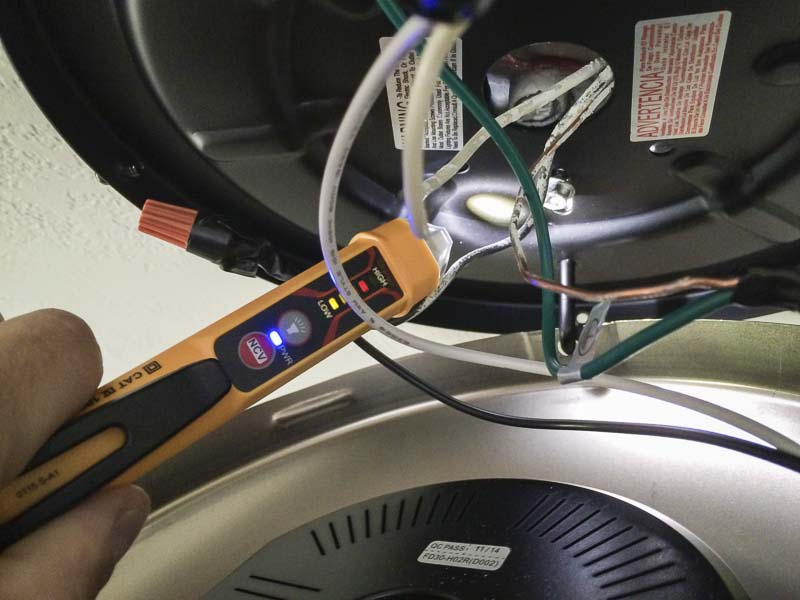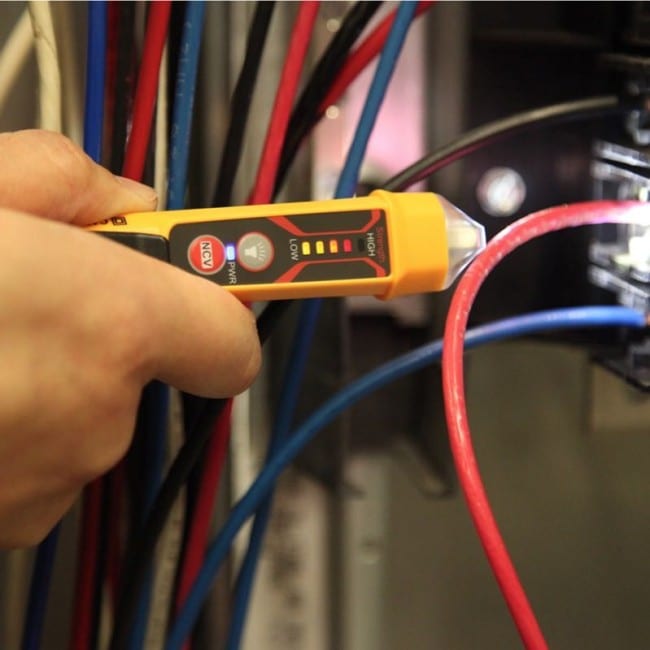There’s nothing sexy about a non-contact voltage tester, but Klein’s NCVT-3 actually goes above and beyond the call, providing an integrated flashlight, IP67 dust and water protection, and a wide-range 12-1000V detector that can handle low voltage applications as well as home and commercial circuits. Indeed, the Klein non-contact voltage tester may be a new staple for electricians, and is priced perfectly for just about every pro to have in their kit.
Klein Non-Contact Voltage Tester NCVT-3 Features
The Klein non-contact voltage tester is the third of a series, with the NCVT-1 being the basic model, and the NCVT-2 adding low voltage detection. The NCVT-3 adds a flashlight and drop testing to an already-great design, making it the last non-contact voltage tester you’ll ever need to buy. With a retail price under $26 it’s an easy purchase for anyone needing to detect low and high voltage energy in live circuits, breakers, or wiring. Assuming you already have a set of new Klein combo-tip drivers or their Klein multi-bit power drivers, this should be your very next purchase.
Here’s a quick breakdown of the Klein NCVT-3 features:
- Detection range: 12-1000VAC
- Frequency: 50-500Hz
- Flashlight with dedicated control
- 5-LED detection bar graph
- Ingress protection: IP67
- Drop protection: 6.6 ft.
- Shirt clip
- Safety rating: CAT IV 1000V
- Power: 2 x AAA batteries
- Battery life: 15 hours (NCVT continuous); 6 hours (flashlight)
- Dimensions: 5.8″ x 1″ x 1.2″
- Weight: 2.5 oz.
Klein NCVT Series Models
- Klein NCVT-1: Cat IV non-contact voltage tester (50-1000V) – 3m drop protection
- Klein NCVT-2: Dual mode Cat IV non-contact voltage tester (12-48V, 48-1000V) – 3m drop protection
- Klein NCVT-3: Dual mode Cat IV non-contact voltage tester (12-1000V) with LED light – IP67 rated protection
Using the Klein Non-Contact Voltage Tester
We immediately grabbed the Klein non-contact voltage tester when we needed to replace and wire a ceiling fan in a local home. As most professional electricians know, you can really get hammered with 120 volts if you assume that the switch is going to always disable power to a ceiling fan. More often than not, power is run directly to the fan, with a loop provided for the switches. That means you can be looking at a hot power wire (or two) even when the switch is in the off position. Plus, it’s just good practice to flip the breaker and avoid that “wonderful” (yes, I’m being sarcastic) situation when a person unknowingly walks in and hits the lights while you’re in the middle of replacing or installing the ceiling fan…good times.
The Klein NCVT-3 not only allowed us to verify the power was indeed disconnected, it also gave us ample light to see what we were going. If you’ve ever worked in the dark, blue and black aren’t all that different until you shine a little light on the wires. The Klein non-contact voltage tester did double duty and paved the way for a hassle-free fan replacement and installation.
Here’s Klein’s overview video of the NCVT-3:
Conclusion
For just under $25, the Klein non-contact voltage tester is as close to a no-brainer tool as you can get if you even occasionally do electrical work. For seasoned professionals, it’s a handy tool that one-ups the standard NCVT products on the market by adding low voltage detection from 12-48V and integrating a handy LED light. The fact that it will give you 15 hours of continuous use (an eternity for a non-contact voltage tester) and 6 hours as an LED flashlight means that you won’t be barreling through AAA batteries either. This is a well-designed tool that does what it’s supposed to and does it well. Pick one up. You won’t regret it.





Not much of a review,sadly.Try it in a junction box with multiple live wires close to each other and see the result. Professionals need better reviews on everyday situations.Does it detect false positives? Is it accurate?